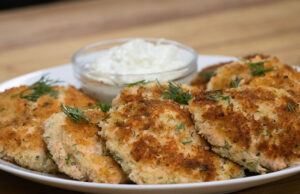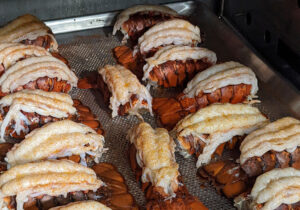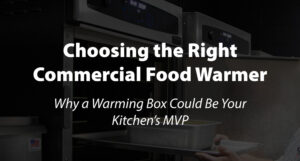CVap® Ovens: Your Kitchen’s Super-Sized Immersion Circulator
When you think of an immersion circulator, you probably picture that little gadget clipped to a pot of water, gently bringing food up to temp like magic. That’s sous vide, famous for being crazy accurate and perfect for low-temp cooking. You set your temperature, and it holds it there, steady as a rock, locking in moisture and staying precisely on-temp, every single time. Imagine that the same technology has been blown up to the kitchen scale. That’s precisely what a CVap oven is: your big, professional-grade immersion circulator.

Why do chefs love precision water bath cooking?
This method of cooking isn’t just a fad. It’s a workhorse in professional kitchens. Chefs love it because it:
- Delivers unbeatable consistency across every plate.
- Locks in natural juices without drowning food in extra fats or oils.
- Preserves nutrients and bright, natural colors in vegetables.
- Reduces food waste because overcooking is nearly impossible.
- Concentrates flavors by infusing food with the spices or marinade added to the bag before sealing.
Proteins stay tender, veggies stay vibrant, and delicate items like eggs or custards come out flawless. Now imagine taking that same precision and making it work for an entire line, not just a single pot. That’s where CVap ovens shine.
How does CVap Technology work?
CVap works on the same concept as an immersion circulator, but instead of immersing food in a water bath, it surrounds it with a carefully controlled water vapor atmosphere. Water vapor carries the same thermal load as a water bath. This allows the vapor to control the internal food temperature as precisely as an immersion circulator. CVap also utilizes an independent air heat system that manages the food’s surface texture, from crispy to soft or somewhere in between. The result? Food stays at the exact doneness you want, juicy, tender, and never overcooked or dried out.
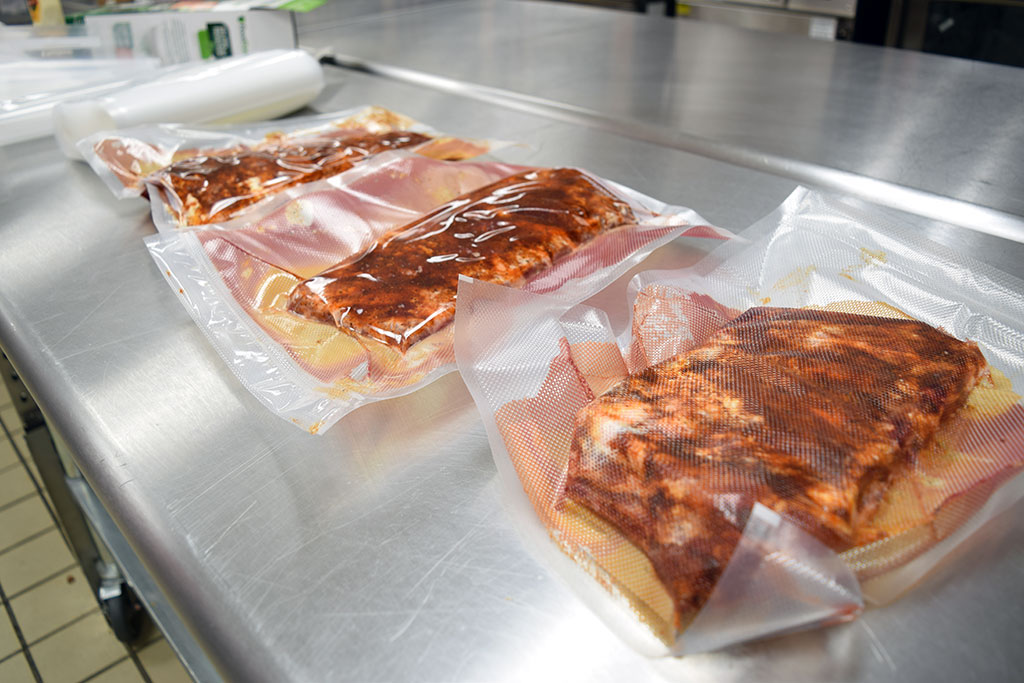
Plus, CVap gives you those precision results without the pile of plastic bags (unless you want to use them, it’s optional). Vacuum bags do serve a purpose if you want to concentrate the flavor of added spices or marinades. The advantage of CVap is that you don’t have to use bags if you don’t want to.
Flexibility That Speeds Up Service
Using an immersion circulator is awesome but takes planning, bagging, sealing, and waiting. CVap gives you the same accuracy while letting you pivot on the fly, change menus, and serve huge volumes without a single vacuum pouch.
Picture this:
- Holding steaks at perfect medium-rare until the dinner rush hits.
- Keeping trays of tender-crisp asparagus picture-perfect for hours.
- Poached salmon that’s ready the second you are.
- Custards that stay silky, never split, and never overcook.
Common Use Cases in Real Kitchens
- Banquets: Hold hundreds of portions of protein without losing quality.
- Catering: Transport food at the perfect temperature and texture.
- Brunch Service: Keep pancakes, waffles, and eggs fresh without getting limp.
- Vegetable Prep: Cook ahead in the morning, serve fresh at night.
Immersion Circulator vs. CVap Oven
| Feature | Immersion Circulator | CVap Oven |
|---|---|---|
| Precision | Super precise | Super precise |
| Capacity | One pot of water | Multiple racks of food |
| Packaging | Requires bags | Bags optional |
| Speed & Flexibility | Long waits, pre-plan | Quick changes, big output |
| Applications | Small-batch cooking | Whole-menu capability |
| Labor Savings | Minimal | Significant |
| Cleanup | Simple | Even simpler - no water pots |
Myths vs. Facts
Myth: CVap is just for low-temp cooking.
Fact: CVap can roast, braise, bake, proof, hold, and finish foods; it’s a multi-tool.
Myth: You can’t sear food after cooking or holding it in CVap.
Fact: You can finish on a grill, flattop, or broiler for perfect texture.
Myth: You must use vacuum bags in CVap.
Fact: Totally optional. CVap works perfectly with or without them.
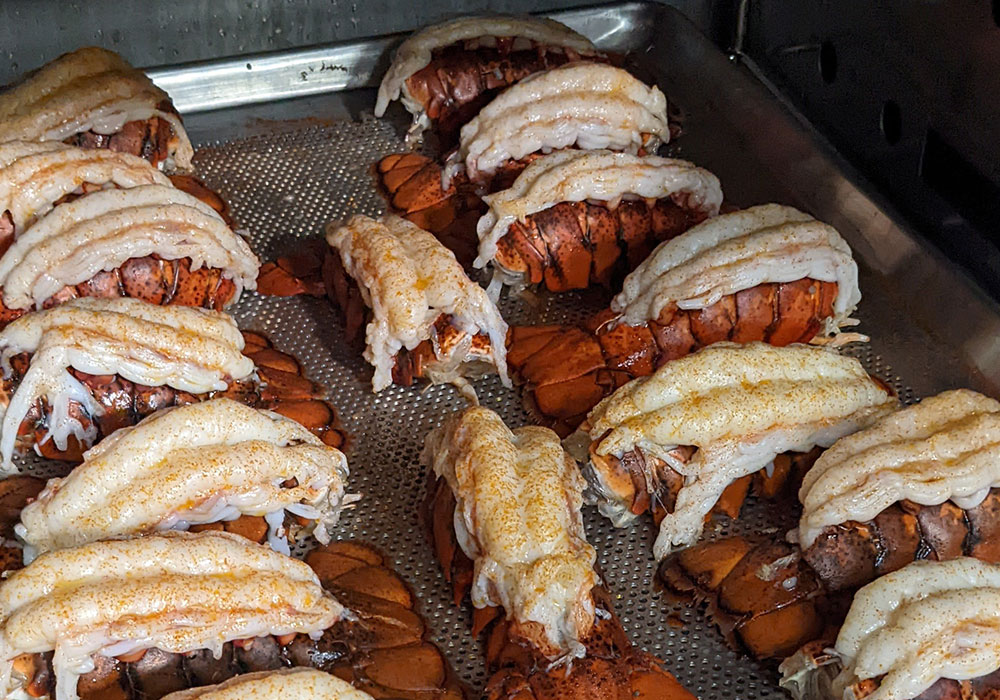
So yeah, CVap is basically your giant, kitchen-scale immersion circulator. Same precision, way more output, and no plastic bags taking over your kitchen.
“If you’re using sous vide, then you should be using CVaps. It’s really that simple.”
Chef Paul W., Boston, MA.
Here are a few recipe examples of immersion cooking in a CVap Oven:
- CVap Sous Vide Shrimp with Butter Herb Sauce – Sweet, tender shrimp ready to plate in seconds.
- Hassle-Free Sous Vide Style Egg Bite – Creamy, protein-packed, and perfectly portioned.
- Sous Vide Pork Chops – Thick or Thin, a Flavor Win – Thick or thin, cooked to perfection every time.
- Sous Vide Turkey – Get Ready to Gobble It Up! – Holiday-ready, without the stress.
CVap + Immersion Circulators: FAQ
Does CVap replace my immersion circulator?
It can, especially if you’re looking to scale up. CVap delivers the same low-temp precision without an immersion circulator's bagging, sealing, or single-batch limits.
Can I still use vacuum-sealed bags with CVap?
Absolutely. While CVap doesn’t require bags, some chefs use them for marinating or portion control. The oven works perfectly with or without them.
How does CVap cook without submerging food in water?
Instead of immersing food in water, CVap surrounds it with a temperature-controlled water vapor atmosphere matched to your target food temperature. This water vapor functions exactly like a water bath, maintaining precise temperature control, but on a larger scale.
Is CVap only for precision water bath-style dishes?
Not at all. CVap can roast, braise, bake, hold, and finish foods, making it one of the most versatile pieces of kitchen equipment you can own. Precision low-temp cooking is just one of its versatile functions.
Will CVap speed up my kitchen?
Yes. Because you can cook, hold, and serve from the same unit, CVap eliminates reheat steps, shortens ticket times, and helps you stay ready for the rush.
The bottom line: CVap is basically your giant, kitchen-scale immersion circulator. It has the same precision, more flexibility, and no plastic bag takeover.
Curious to see it in action? Check out our CVap ovens and discover how they can bring immersion circulator-style precision and flexibility to your kitchen without slowing you down.
Want to discuss how to bring the power of a big ol’ immersion circulator into your kitchen via CVap? Let’s chat!

